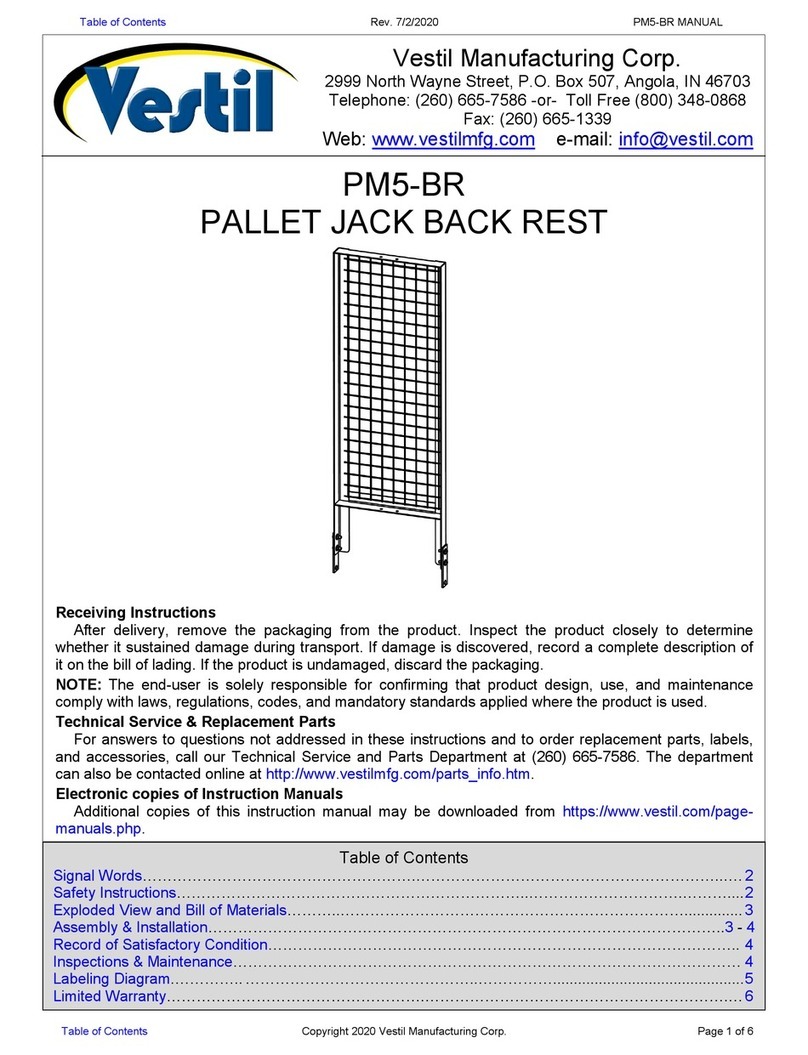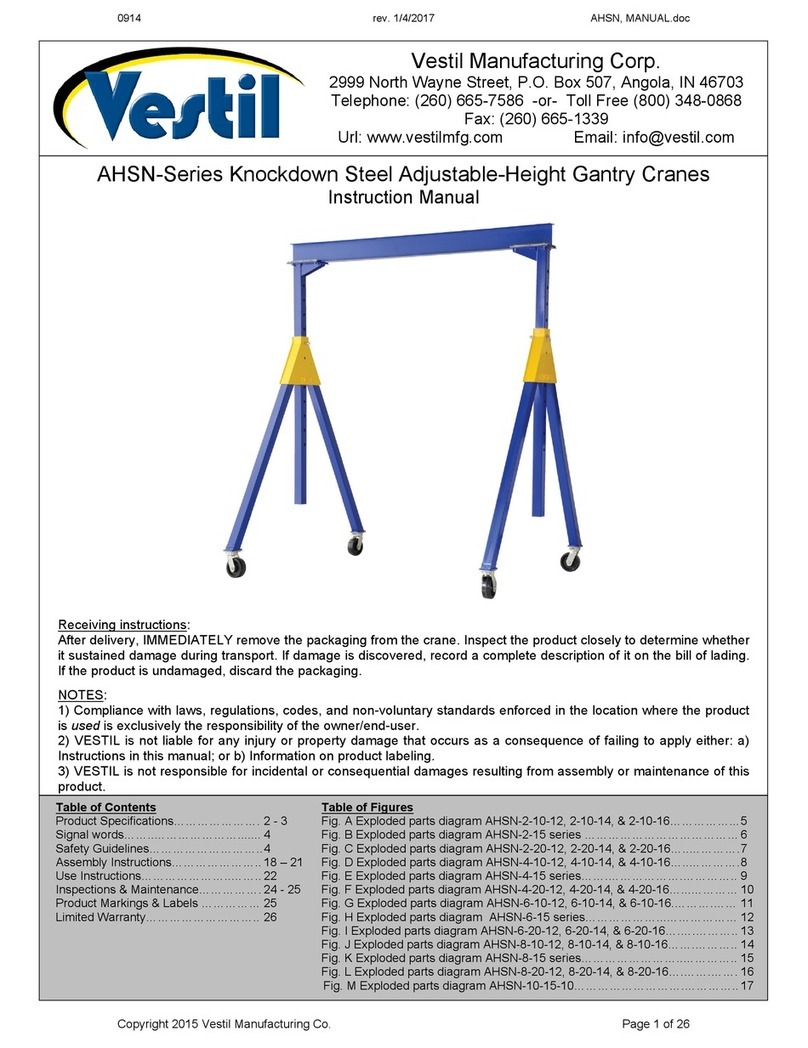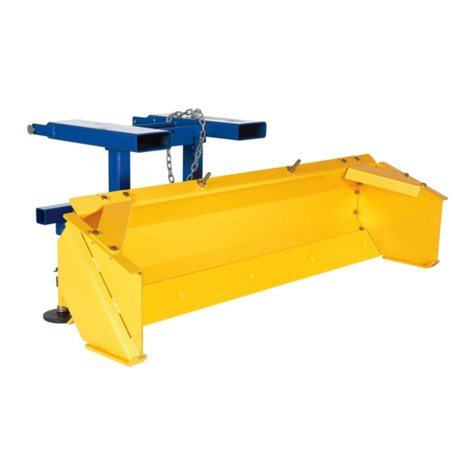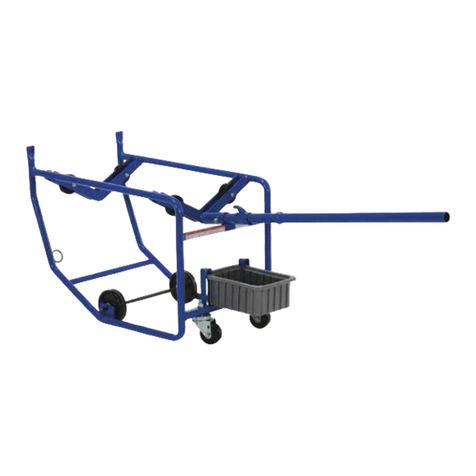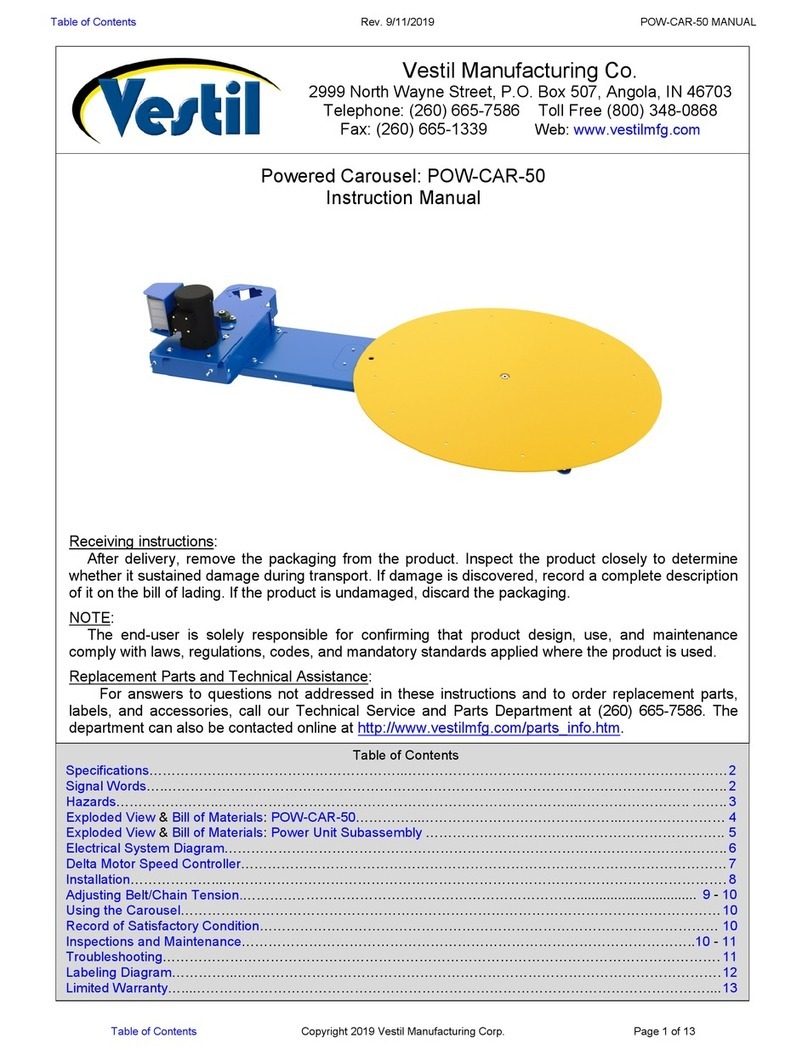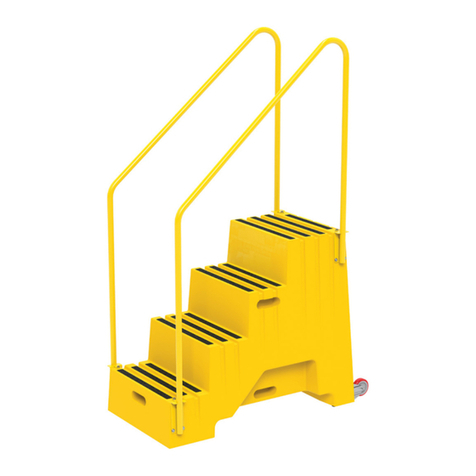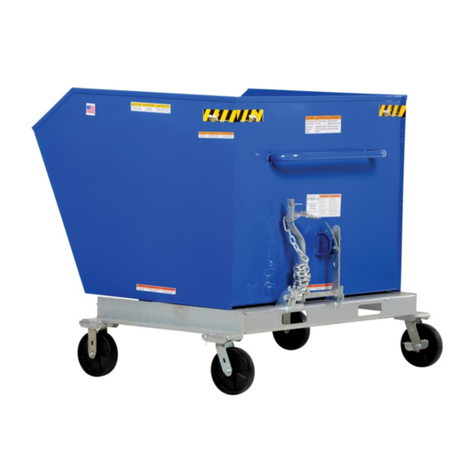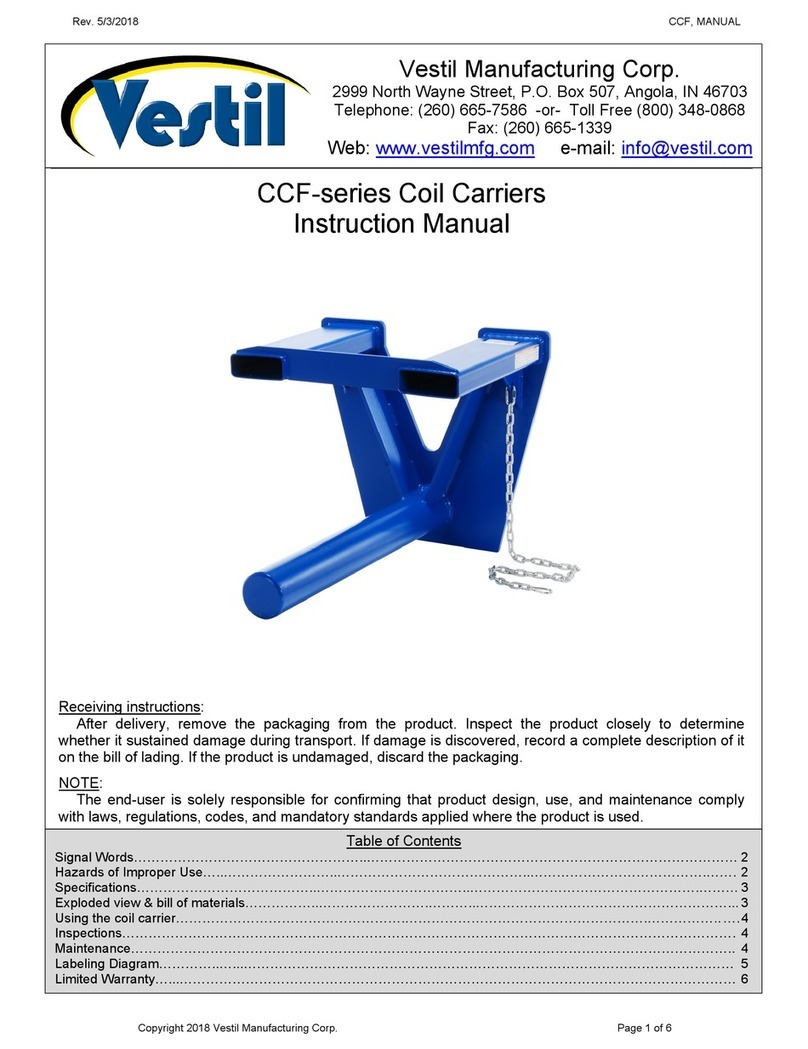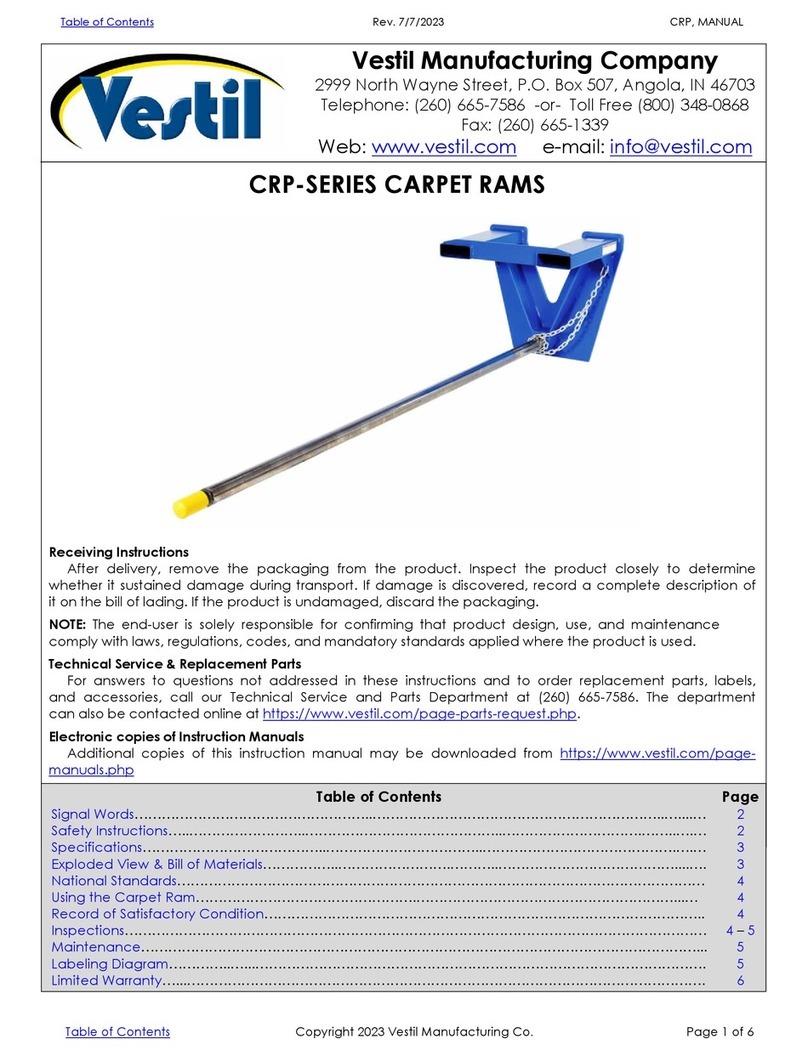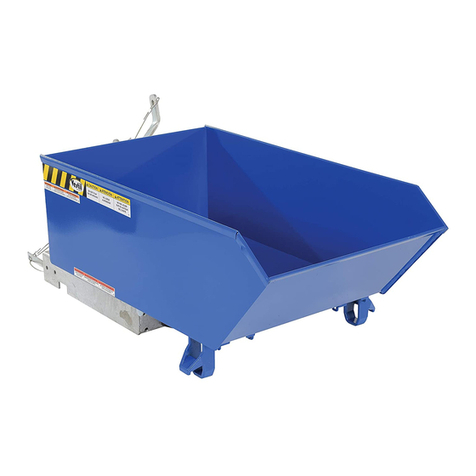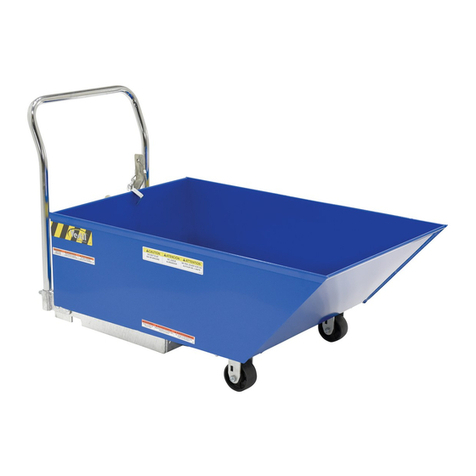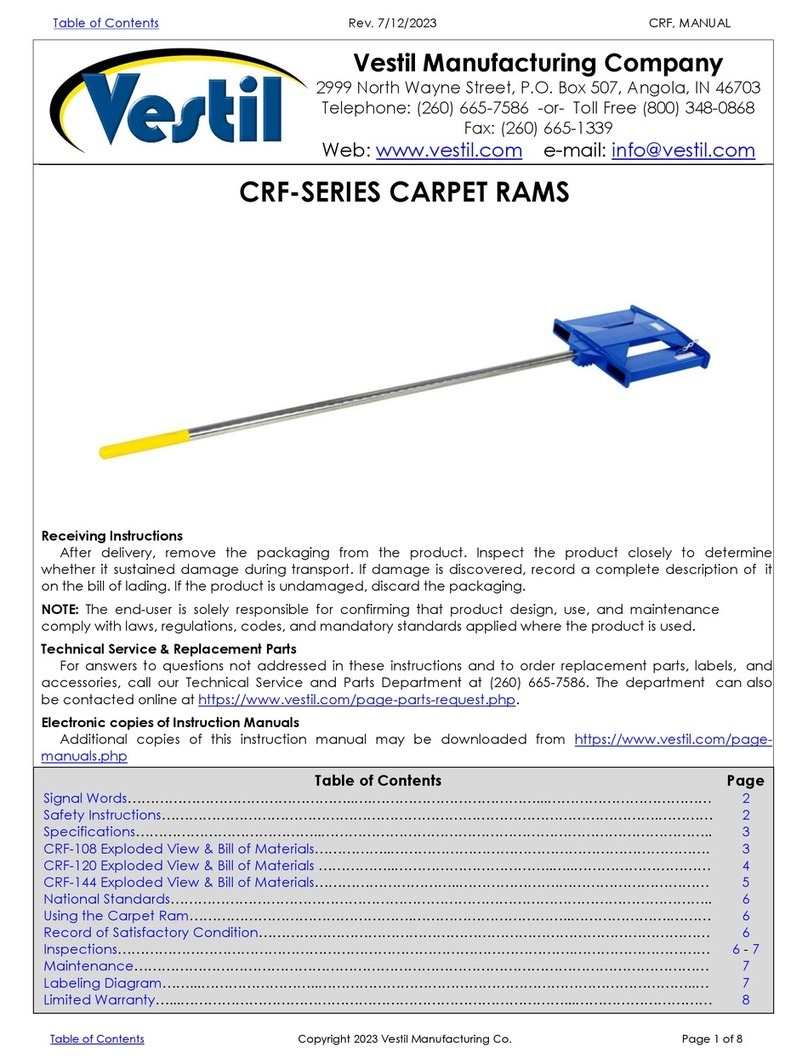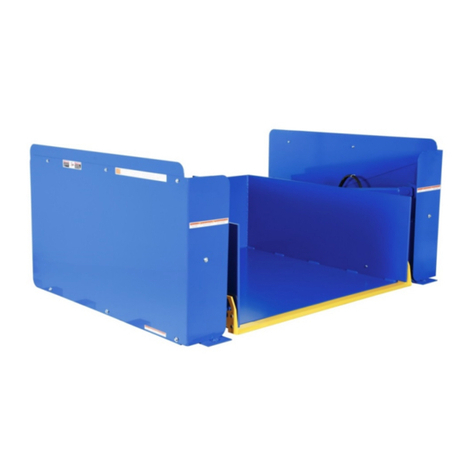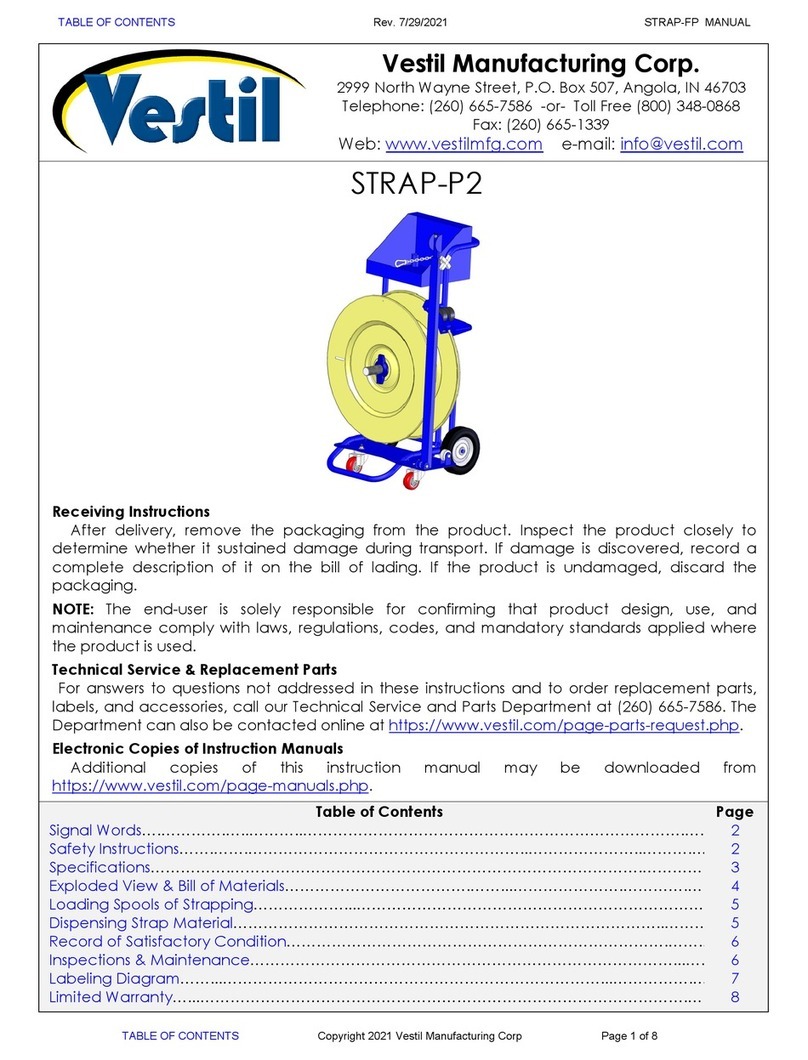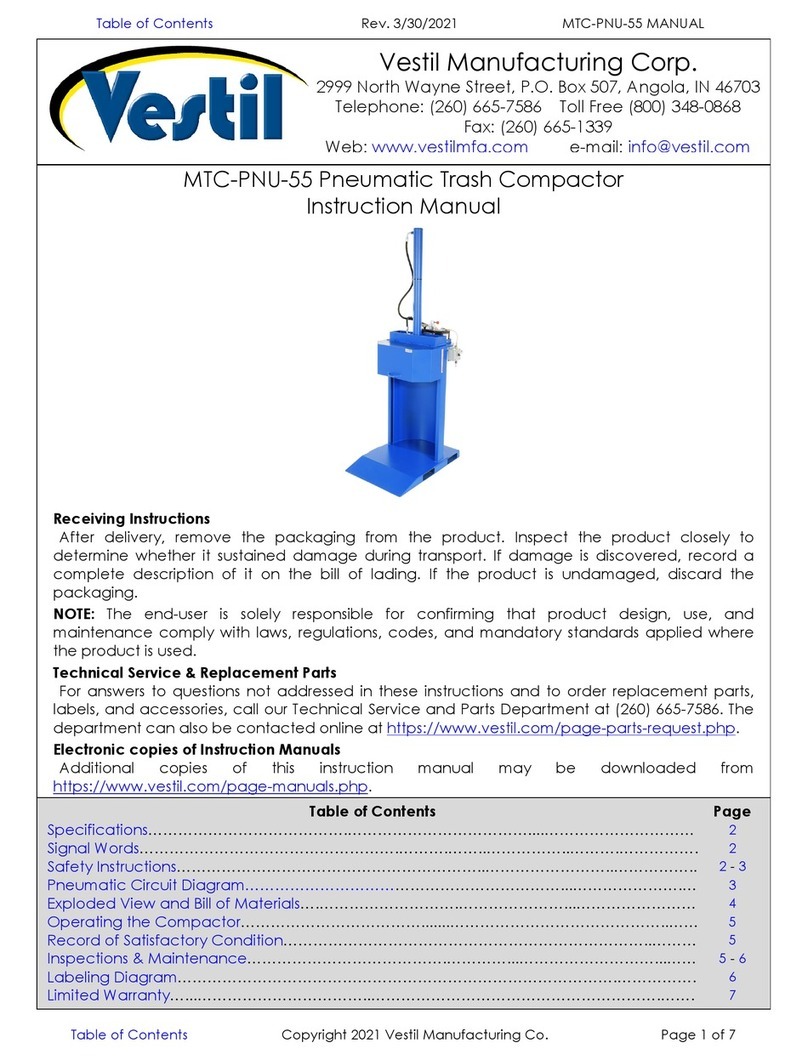
HBD, MANUAL.doc
Copyright 2016 Vestil Manufacturing Co. 5 of 20
Inspections
Before each use, inspect the listed components:
1. Wires: look for frays;
2. Hydraulic system: check lines for chafes, pinches or leaks, and
the reservoir for punctures or leaks;
3. Container-restraining tube (and the openings in the chute that
receive each end of the tube): damage deformation, looseness
of fit;
4. Frame: check the cylinder brackets, vertical and horizontal
frame members, horizontal cross-member, and angle cross
member, hinge blocks, and pivot shaft and spacer assemblies
for cracking, deformation and corrosion;
5. Limit switches: verify normal function. The chute should not
rotate beyond approximately 45 degrees or below 0 degrees.
(See FIG. 1).
Also listen for unusual sounds that might indicate binding or
grinding during operation and watch for erratic movement(s).
Contact maintenance personnel if you observe any unusual
sound or movement and do not use the dumper until approved for
service.
At least once per month, inspect the dumper as follows:
1. Oil level: fully raise the chute (to the 45°) “dumping position,” and then observe the level of oil in the reservoir. The
surface of the oil should be 1 to 1½ inches below the fill hole.;
2. Pivot points: check the dumper for excessive wear at the pivot points between hydraulic cylinders and cylinder
brackets, and between pivot shafts and hinge blocks;
3. Floor connection points: anchor bolts should prevent the frame from lifting off of the ground during chute
operation. Concrete around each anchor bolt should be intact—no cracking or flaking;
4. Fasteners: check each fastener connection. Tighten any loose connection;
5. Hoses and wires: check each wire and hose for damage (fraying, binding, etc.);
6. Labels: labels should be easily readable and undamaged, affixed to the dumper in the locations as shown in FIG.
8 on p. 14.
7. Container-restraining tube (and the openings in the chute that receive each end of the tube): inspect the tube for
damage deformation, looseness of fit.
At least once per year, change the hydraulic oil if it becomes gritty or looks milky (water present in the oil). With
the chute in the fully lowered position, drain the oil and replace it with either Dexron transmission fluid or anti-wear
hydraulic oil, viscosity grade 150 SUS at 100°F (ISO 32 cSt at 40°C.
Power unit operation
The box dumper utilizes an electric motor directly coupled to a gear pump to pressurize the hydraulic fluid. Fluid
pressure moves the cylinders up or down, and this movement performs the work required to raise and lower the
chute. A hydraulic manifold bolted directly onto the gear pump houses the hydraulic control components; each
component is rated for 3,000psi working pressure.
Important components of the power unit include:
Electric motor: when ordered, the owner of this box dumper selected either a single-phase or three-phase AC
motor. Regardless of phase capabilities, every motor is dual-voltage capable.
Gear pump: shaft coupled directly to the shaft of the electric motor. Several displacements are available are
correspond to the horsepower of the motor selected.
Check valve (HBD-2-## and HBD-4-## models): prevents backflow of fluid through the pump and thereby allows
the chute maintain a given position indefinitely.
Pressure relief valve: opens a path for fluid to flow back to the reservoir if fluid pressure exceeds 3,000psi.
Lowering solenoid valve: electrically-operated cartridge valve with an integral screen to keep contaminants from
entering the valve.
Counterbalance valves (6,000lb. rated load models only): allow smooth motion in double-acting hydraulic circuits.
Pressure compensated flow control spool (2,000lb. & 4,000lb. rated load models only): located beneath the
lowering valve, and regulates the fluid flow to the reservoir. This component allows the table to lower at the
constant rate independent of the weight of the dumper and contents. Several sizes are available.
Hydraulic cylinders: 2,00lb. and 4,00lb. rated load models utilize displacement style cylinders. Each cylinder
includes a bleeder valve (located at top end) for removing air from the hydraulic system.
6,000lb. HBD models use double action cylinders.
45°
Dumping
position:
chute fully
raised
Loading position:
chute fully lowered
FIG. 2: Limit
switch effect on
dump angle
Rev. 04/2016
45°




















